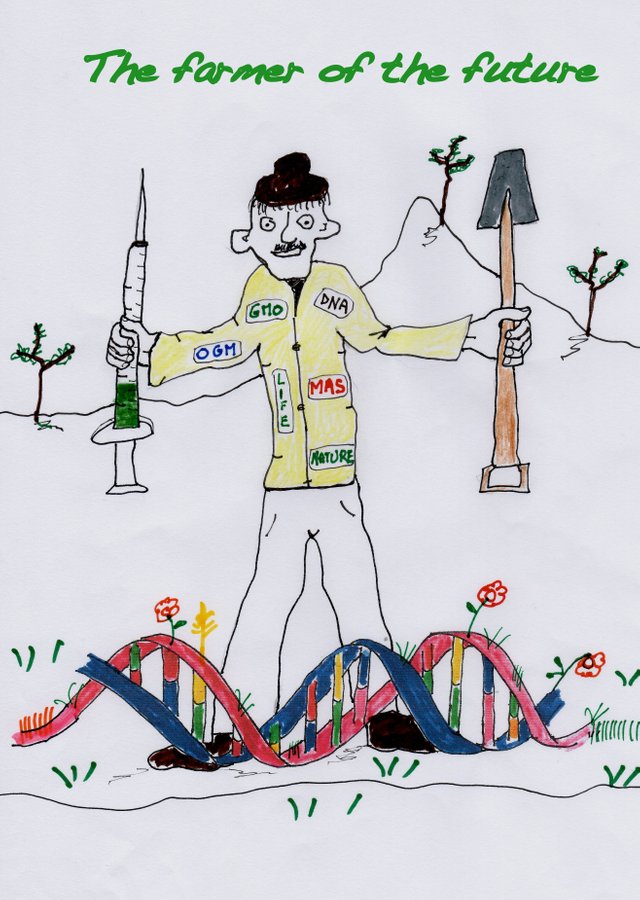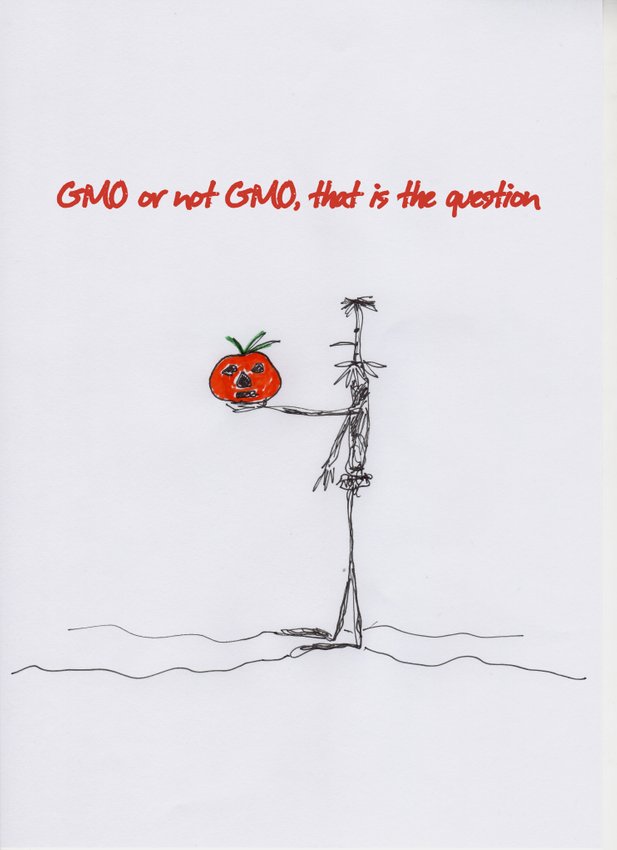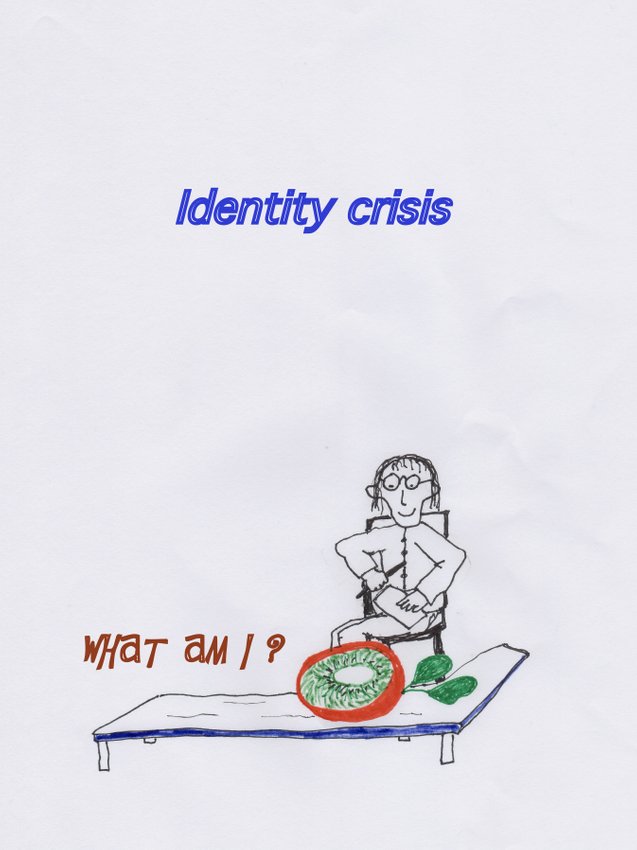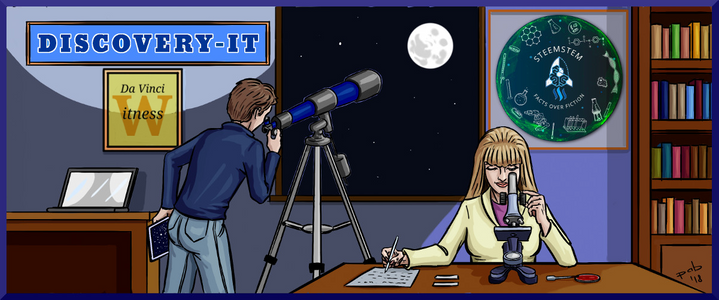Discovery Science Presents: Pros and cons in the use of GMOs

Discovery-it Science





Pros and cons in the use of GMOs

When we hear about GMOs we prick up our ears and we are wary not having perhaps a definite opinion.
It must also be said that over the millennia, many foods that we consume are genetically modified in a natural way as in the case of wheat. The bread that we consume, it is made with flour of the type "Triticum aestivum" which is the result of several hybridization processes that have occurred over time.
So the topic is complex, I know that progress and the scientific research cannot be stopped, I also know that not all that research gives us is healthy. So it will be easy to reason on the subject by trying not to have a preconceived idea.
In the meantime, lets try to understand what is meant by genetically modified organism (GMO). When a plant or an animal or a microorganism undergoes an alteration of its DNA by the hand of Man through genetic engineering we can talk about GMOs, because takes place the transfer of individuals genes from one organism to another.
Basically it alters the genetic patrimony of plants or animals to improve, enhance, to develop some characteristics of a species, mainly of agriculture but also in the pharmaceutical field.
In agriculture, the use of engineering techniques is used to modify the genome of plants and therefore to improve their productivity, to lower the costs, to create the conditions for resistance to pests and diseases and to adapt them to the sudden climate change that we are witnessing in recent decades.
Since some years, you can find GMO foods on the market that are offered to consumers from the point of view of advantages: due to their lower price compared to natural products, for the increase in duration and nutritional values of the product as well as, for their best use in cultivation and breeding.
In many parts of the world, thanks to the strong commercial persuasion from multinational companies in the agro-chemical-health sector such as Monsanto-Bayer, there was a strong development in the use of genetically modified seed in order to make crops more resistant to diseases and insects and, not least, the possibility of reducing the use of herbicides, pesticides and insecticides.
In this way the GMO topic would seem to have only advantages, but it is still subject of scientific debate regarding safety and health of people, of animals and plants.
In Italy, source Coldiretti, the 80% of consumers is opposed to the use of GMOs for the implications on the environmental protection front, in the context of safeguarding biodiversity, favoring the consumption of natural products. In Italy the legislation prohibits, in agricultural production, in livestock farming and in the transformation of food products, the use of GMOs. This legislation however, with evident contradiction, it allows the importation of transgenic products from other countries.
This obviously poses problems for the consumer, who finds on the shelves of his supermarket GMO products that he could buy in a non-conscious way.
It will be necessary to always read the label on the packaging of the products, before buying them and bring them on the table.
GMO a very interesting topic for the people and their ecosystem, where deadly economic interests come into play. Facing each other multinational companies, intent on grabbing the agricultural resources of the planet, governments, increasingly vulnerable and inadequate to the challenge and an exterminated humanity that doesn’t want to be poisoned and that demands the respect for the environment and his biodiversity.


GMO OR MAS, WHY NOT COMMON SYNERGIES?

The biological technique is something that man has empirically used for thousands of years.
Producing bread, yogurt, cheese, wine, and drinks, all this happened thanks to microorganism fermentation processes. Humans also used biological techniques when selected and crossbred plants and animals in order to improve their productive yield.
However, in 1953, James Watson and Francis Crick discovered the structure of DNA, deoxyribonucleic acid, which contains the genetic hereditary material present in all the cells of living organisms. This gives us all the information necessary to understand the characteristics of a species and then a new science strongly entered in history: molecular biology.
The new genetic engineering techniques have allowed, more and more precisely, to modify a part of the genetic material of a living organism with portions of DNA of other organisms. The result is generally called GMO, or genetically modified organism. GMOs are basically new species different from what happens in nature due to natural crossbreeding. But why do we need to resort to such sophisticated engineering techniques to select plants or animals?
One reason is that living in a complex society that consumes and produces quickly, there is no time to wait for natural improvements and in any case, they are not sufficient to satisfy economic - productive needs.
Genetic engineering, on the other hand, allows you to modify plants and animals in a precise and fast way according to pre-established demands.
At the present time, it is possible to intervene on both plants and animals by introducing certain characteristics through genome manipulation , in order to obtain the final result desired and thus overcoming genetic barriers.
From different sides, people wonder if indeed these new techniques of species selection are actually useful for humans and are not harmful.
Here are some elements in favor of GMOs. In medical field the use of GMOs is well employed in the production of drugs, such as insulin or hepatitis B vaccine.
In the agricultural field, the use of GMOs is aimed against viruses, bacteria, insects. At the same time it tried to reduce the use of pesticides and herbicides, increase the resistance to extreme climatic factors such as drought, cold, salinity and increase productivity.
In the alimentary field, it is aimed to improve the nutritional characteristics of foods and their conservation. Last but not least, the genetic engineering technique applicated to the environmental scope is addresses to reclaim land and polluted waters.So far we have seen, in a nutshell, the pros of the use of GMOs. On the other side of the coin, some people wonder if this is the right road or if GMOs can be harmful to our health.
One of the main concern is the massive use of GMOs in human and animal food and in the environment.
We can imagine the consequences in the ecosystem for the use of transgenic seeds in every corner of the planet. This will result the disappearance of biodiversity and therefore of existing species.
On the other hand, on humans and animals, we can only hypothesize health risks such as allergies or resistance to antibiotics because of the absence of a long-term medical-scientific literature [2].
The published data of a recent research carried out by a group of researchers from the Sant'Anna High School and the University of Pisa are promising. Their research was based on the cultivation of GMO corn over a period of time between 1996 and 2016 and analyzing the data collected from all the main countries of the world.
This Italian research has come to the conclusion that transgenic corn is not harmful to human, animal or environmental health. It also reduces the presence of harmful insects and it has lower percentages of toxic substances and guarantees greater productivity.
In more detail, the research based on 11,699 collected records, showed that transgenic corn crops produce more with values between 5.6% and 24%, and crops have much lower percentages of mycotoxins (-28.8%) and fumonisins, (-30.6%), toxic substances produced by mushrooms. [1]
However, in contrast to this research that supports the positive aspects of agricultural production transgenic, there are associations who are firmly against it such as Greenpeace which asserts that the use of GMOs is a stop to ecological innovation in agriculture.
In addition, today agriculture is under the control of agro-chemical multinationals such as the colossus Monsanto-Bayer and by imposing their seeds they determine the impoverishment of biodiversity.
The environmental associations claims that the current use of GMOs is aimed at resisting pests and herbicides rather than adapting agriculture to climate change.
They suggest that there are more effective selection techniques such as MAS (Marker-Assisted Selection). This technique in combination with DNA study will be able to identify the best characteristics of different species and perform targeted, and more convenient and less invasive, crossbreeding.
The use of MAS, in geographic areas with severe drought and in the use of wheat or some rice varieties which are well suited to flooding, is giving significant results in many areas of the Philippines. Farmers are adapting agricultural practices to cope with climate change producing food in alternating periods of drought and tropical typhoons. Therefore they use an ecological agriculture that can adapt to climate [3].
As these notes are clear, the debate on the pros or cons of the use of GMOs is open. There are reasons that can be shared and documented by both sides in this field.
Today, I think we need to make an extra effort and not demonizing GMOs but also not think that it will be the panacea that can solve all the agricultural-food-environmental problems.
It is instead useful, for all of us, a mutual listening and fielding synergies for common challenges.
Links:
1.Impact of genetically engineered maize on agronomic, environmental and toxicological traits
2.An integrated multi-omics analysis of the NK603 Roundup-tolerant GM maize reveals metabolism disturbances caused by the transformation process
3.Marker-assisted breeding
4.ingeneria genica
written by @phage93


GMOs: WHAT THEY ARE AND HOW THEY WILL INFLUENCE OUR LIVES

With the passage of years, technological progress advances with the aim of improving the conditions of human life and living beings on this planet. A very respectable target , however, is difficult to achieve, either by lack of will, or for inappropriate use of this powerful tool that a higher entity has granted us. For many years advance in the agronomic and food sector has made great strides towards progress, from the design of machines for agricultural production to the study of both plant and animal origin products, looking for alternative solutions that would allow to increase the production cycle, due to the ever increasing demand worldwide. So the big multinationals have invested in research and genetic engineering reaching a sometime controversial goal and that is still used today to make products in the food industry on a large scale; it is a mechanism called transgenesis . Transgenesis is a manipulation procedure of the genetic heritage of a living organism, both of vegetable or animal origin, which allows to confer specific genetic peculiarities to the product (eg to modify the genetic patrimony of a plant in such a way as to make it immune to a specific herbicide, modify the in vitro genetic heritage of hen's embryos in order to make them immune to bird flu, etc.), in some cases we speak of GMOs ( Genetically Modified Organisms ) and in recent years the diffusion of these products has expanded considerably, so much that the most important multinationals export food and agronomic products handled in all the countries of the world. One of the experiments that was surely successful was that of a British multinational that has invested in a project to repopulate genetically modified mosquitoes in the Cayman Islands to fight the malaria [1]. The transgenesis procedure is also widely used in the production of feed for animals and for the production of maize [3] which is among the most imported products in all Western countries.
As already mentioned, scientific and technological progress must tend to improve the life conditions of living beings, but every process has several positive aspects and many others negative. Genetic manipulation is still the subject of study and the inappropriate use of this powerful knowledge could produce side effects and anomalies in the organisms that consume certain products: a phenomenon of mass genetic pollution would propagate very quickly and without any control, for this reason some countries have introduced institutional laws with the aim of regulating the agronomic and food sector and in some cases even banning any kind of GMO [2] (even if ineffective) wishing to safeguard the quality of their typical local products. There are numerous positive and negative aspects to this topic and to the use of this procedure, from the scientific aspect to the ethical aspect, the transgenesis is criticized by scholars from all over the world and all this makes it an really controversial and complex argument , but on the other hand we as Discovery-it like to plunge into the maze of science and borderline issues. I hope I have intrigued readers on this subject by arousing the desire to read up and we expect many comments that stimulate the debate on our page. Below you can find some sources for more documentation. Stay tuned for the next exit.
Links:
- Le zanzare OGM
- Salvaguardia della qualità dei prodotti
- Mais e microtossine
- Transgenic procedure for the transformation of the Agrobacterium Tumefaciens in Pinus
- Cosa sono gli OGM
- Assessment of Possible Ecological Risks and Hazards of Transgenic Fish with Implications for Other Sexually Reproducing Organisms
written by @paololuffy91

Discovery-it Science








This post has been voted on by the SteemSTEM curation team and voting trail.
If you appreciate the work we are doing then consider voting us for witness by selecting stem.witness!
For additional information please join us on the SteemSTEM discord and to get to know the rest of the community!
This post has been upvoted for free by @minibot with 0.1%!
Get better upvotes by bidding on me.
More profits? 100% Payout! Delegate some SteemPower to @minibot: 1 SP, 5 SP, 10 SP, custom amount
You like to bet and win 20x your bid? Have a look at @gtw and this description!